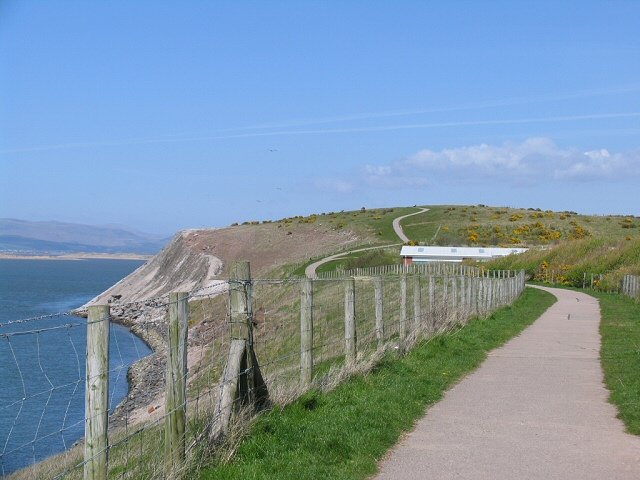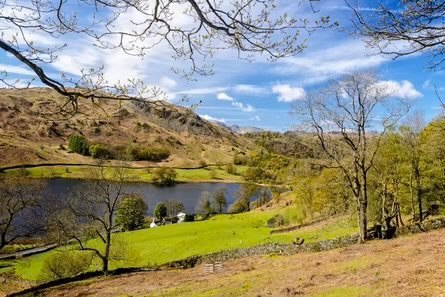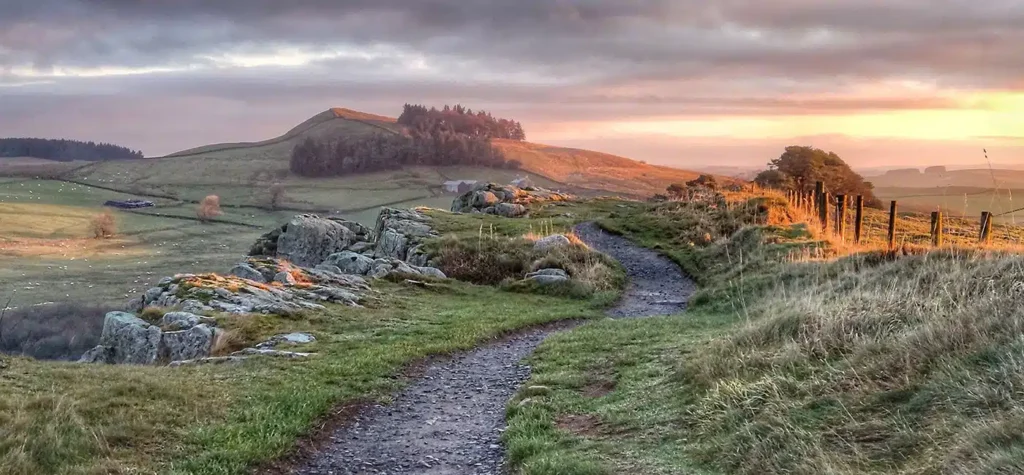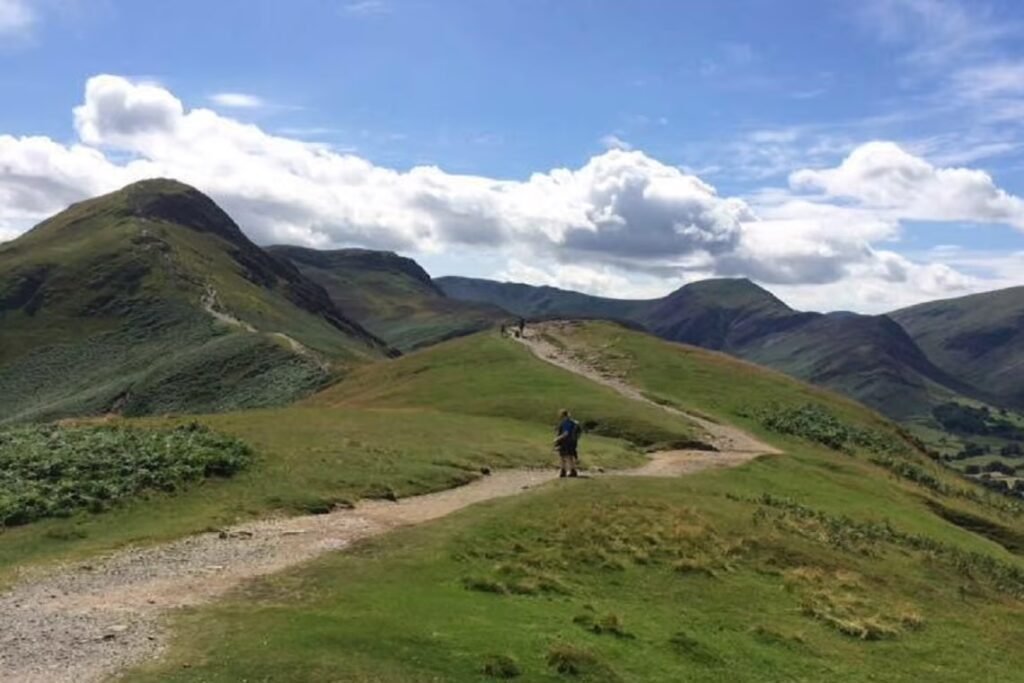
Key Points
- Research suggests the Walney Coastal Path is a 16.2-mile circular route on Walney Island, Cumbria, part of the England Coast Path, opened in 2020, offering scenic views and wildlife.
- It seems likely that the path includes North and South Walney Nature Reserves, known for grey seals, birds like eider ducks, and rare species like the natterjack toad.
- The evidence leans toward it being ideal for walkers of all levels, with easy access, parking, and facilities, though some sections may be muddy or overgrown.
- There is a discrepancy in length, with some sources suggesting 21 miles, but official data supports 16.2 miles; this is a minor controversy but does not affect the path’s appeal.
Introduction to the Walney Coastal Path
The Walney Coastal Path is a scenic walking route on Walney Island, off the west coast of Cumbria, England. Research suggests it’s a 16.2-mile (26.1 km) circular trail, part of the England Coast Path, a National Trail aiming to encircle England’s coastline. Opened on 12 February 2020, it offers walkers a chance to explore diverse landscapes, from sandy beaches to nature reserves, with stunning views of the Irish Sea and Morecambe Bay.
Route and Highlights
The path starts at Earnse Point, heading north along the west coast through sandy beaches and dunes, entering the North Walney National Nature Reserve. It then crosses to the east coast, passing Biggar Bank, before reaching the South Walney Nature Reserve, known for grey seals, and returning to Earnse Point. Key highlights include views of the Lake District fells and wildlife spotting opportunities.
Practical Information
It seems likely that the path is accessible via car parks at Earnse Point, West Shore Road, and Biggar Bank, with buses from Barrow-in-Furness. Accommodation options include bed and breakfasts and campsites, with spring and autumn recommended for milder weather and wildlife viewing.
Survey Note: A Comprehensive Exploration of the Walney Coastal Path
The Walney Coastal Path, launched on 12 February 2020, is a 16.2-mile (26.1 km) circular walking route on Walney Island, Cumbria, forming part of the England Coast Path, a National Trail aiming to encircle England’s coastline. This trail, managed by Natural England, showcases the island’s diverse landscapes, wildlife, and historical significance, making it a must-visit for walkers. The guidebook “Highlights of the England Coast Path: 30 walks” by Cicerone Press includes a walk on Walney Island, though specific details were not accessible during research.
Background and Significance
Walney Island, also known as the Isle of Walney, is a low-lying island at the western end of Morecambe Bay, connected to Barrow-in-Furness by the Jubilee Bridge. The England Coast Path project, initiated in 2011 under the Marine and Coastal Access Act, aims to create a continuous coastal path, with Walney’s section being one of the first completed. Opened by the Mayor of Barrow, Councillor Kevin Hamilton, it highlights the island’s ecological and industrial heritage, promoting tourism and conservation.
Detailed Route Description
The path is typically walked clockwise, starting at Earnse Point. It’s divided into four sections:
- Earnse Point to North Walney National Nature Reserve (approx. 4 miles): Starts at Earnse Point, following the west coast with sandy beaches, dunes, and views over the Irish Sea. Enters the North Walney National Nature Reserve, an SSSI and SPA, known for rare species like the natterjack toad and Walney geranium.
- North Walney National Nature Reserve to Biggar Bank (approx. 5 miles): Continues through the reserve, passing saltmarshes and mudflats, then crosses to the east coast, reaching Biggar Bank, a village with a historic lifeboat station and views of the Lake District fells.
- Biggar Bank to South Walney Nature Reserve (approx. 4 miles): Follows the east coast, passing industrial areas and saltmarshes, entering the South Walney Nature Reserve, famous for grey seals and birdlife.
- South Walney Nature Reserve to Earnse Point (approx. 3.2 miles): Returns along the west coast, through dunes and shingle beaches, ending at Earnse Point.
Some sources, like a GOV.UK announcement, suggest a 21-mile length, creating a minor discrepancy, but official data supports 16.2 miles, likely due to additional loops or variations.
History and Cultural Context
Walney Island has prehistoric roots, with evidence of Mesolithic activity, and played a role in Barrow-in-Furness’s shipbuilding history. The path reflects this blend of industrial and natural heritage, with landmarks like Biggar Bank’s lifeboat station and views of the Walney Channel, where shipbuilding activities are visible.
Wildlife and Nature Reserves
The path traverses two key reserves:
- North Walney National Nature Reserve: Covers 1,000 acres, with dunes, saltmarshes, and lagoons, home to natterjack toads, Walney geraniums, and birds like oystercatchers and ringed plovers. It’s a breeding ground for waders, with guided walks available.
- South Walney Nature Reserve: Managed by Cumbria Wildlife Trust, it features shingle beaches and saltmarshes, hosting a grey seal colony and birds like eider ducks and great black-backed gulls. A visitor center offers educational exhibits.
Additional wildlife includes hares, foxes, and various waders, with the path’s habitats vital for migratory and resident species.
Practical Tips for Walkers
- Length and Duration: 16.2 miles, taking 6-8 hours for a full circuit, or break into sections for day walks.
- Difficulty: Easy to moderate, mostly flat, suitable for most walkers, though some muddy or overgrown sections require sturdy footwear.
- Access and Parking: Car parks at Earnse Point, West Shore Road (LA14 3UE, free parking), and Biggar Bank. Buses from Barrow-in-Furness serve the island.
- Accommodation: Options include the Queens Arms in Biggar for a pint and basic stay, plus hotels and campsites on the island, with nearby Barrow-in-Furness offering more choices.
- When to Visit: Spring and autumn ideal for wildlife and milder weather; summer busy, winter quieter but shorter days and potential rough weather.
- What to Bring: Waterproof clothing, sturdy shoes, map/GPS, sunscreen, insect repellent, binoculars for birdwatching, snacks.
- Safety: Check weather forecasts, be aware of tides, and respect wildlife by sticking to paths.
Personal Experiences and Reviews
Walkers describe the path as a “hidden gem,” praising its scenery, wildlife, and tranquility. Reviews highlight stunning views of the Irish Sea, Morecambe Bay, and Lake District fells, with sightings of seals and birds. Some note muddy sections but find them outweighed by rewards, recommending spring or autumn visits for optimal conditions.
Modern-Day Relevance
In today’s fast-paced world, the Walney Coastal Path offers a chance to disconnect and reconnect with nature, aligning with conservation efforts. It’s ideal for nature enthusiasts, families, and walkers seeking solitude, with facilities ensuring accessibility.
Conclusion
The Walney Coastal Path is a scenic, wildlife-rich journey through Walney Island’s diverse landscapes, celebrating its natural and historical heritage. Whether drawn by seals, birds, or views, it offers an enriching experience, with practical amenities ensuring a memorable visit. Pack your bags and explore this Cumbrian coastal treasure.
Supporting Resources
- Walkers to enjoy new 21-mile coastal path on Walney Island – GOV.UK
- King Charles III England Coast Path: Walney Island – GOV.UK
- The Coastal Path from South to North Walney Island • Walking the Cumbrian Mountains
- North Walney National Nature Reserve Circular, Cumbria, England – AllTrails
- Walney Island- Islandeering


